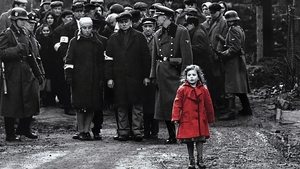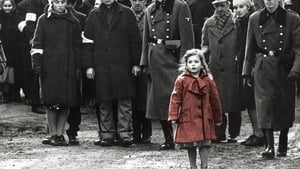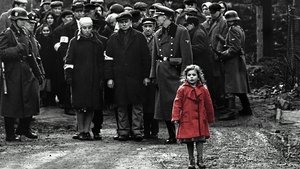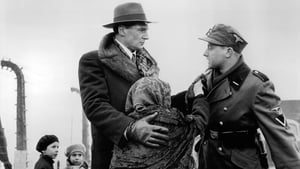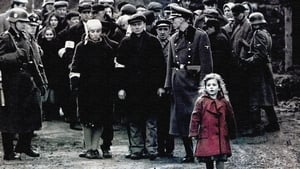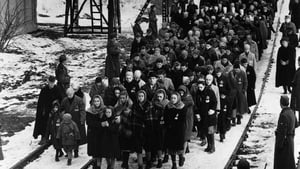Video Sources 0 Views
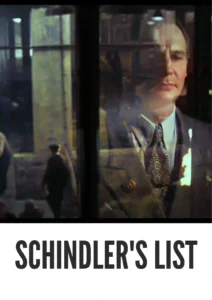
Synopsis

Experience the emotional depth and historical significance of Steven Spielberg’s Schindler’s List, an epic historical drama released in 1993, now masterfully colorized to enhance its visual impact and emotional resonance. Starring Liam Neeson as Oskar Schindler and Ben Kingsley as Itzhak Stern, this film tells the gripping true story of a German industrialist who risked his life to save over a thousand Polish-Jewish refugees from the horrors of the Holocaust during World War II. Perfect for history enthusiasts and those seeking a profoundly moving cinematic experience, this HD download brings a timeless story of courage and compassion to life with stunning clarity and detail.
Schindler’s List follows the transformation of Oskar Schindler, a morally ambiguous businessman who initially seeks to profit from the Nazi regime. As he witnesses the systematic persecution and extermination of Jews in Krakow, Poland, Schindler’s conscience awakens, and he becomes determined to save as many lives as possible.
Using his wealth and influence, Schindler establishes a factory and employs Jewish workers from the Krakow ghetto, shielding them from deportation to concentration camps. With the help of his trusted accountant, Itzhak Stern, Schindler navigates the treacherous landscape of Nazi-occupied Poland, bribing officials and manipulating the system to protect his workers.
As the war progresses and the Nazi regime intensifies its efforts to exterminate the Jewish population, Schindler becomes increasingly desperate, exhausting his resources and risking his own life to ensure the survival of his “Schindlerjuden” (Schindler’s Jews). The film culminates in a powerful and emotional climax, as Schindler’s list of saved lives becomes a symbol of hope and resilience in the face of unimaginable evil.
The film features a remarkable cast of actors who bring this historical drama to life with depth and authenticity:
-
Liam Neeson as Oskar Schindler
-
Ben Kingsley as Itzhak Stern
-
Ralph Fiennes as Amon Göth
-
Caroline Goodall as Emilie Schindler
-
Jonathan Sagall as Poldek Pfefferberg
Schindler’s List is a powerful historical drama that explores themes of morality, compassion, and the resilience of the human spirit in the face of unspeakable evil.
Released in 1993, Schindler’s List serves as a stark and unflinching portrayal of the Holocaust, one of the darkest chapters in human history. The film is based on the true story of Oskar Schindler, a German industrialist who saved over a thousand Jewish lives during World War II. Schindler’s List remains a testament to the importance of remembering the Holocaust and honoring the lives of those who perished.
This colorized version of Schindler’s List has been meticulously restored using state-of-the-art digital techniques, enhancing the visual appeal while preserving the film’s original atmosphere and emotional impact. The colorization process involved a careful analysis of the grayscale tones in the original black and white footage, with special attention paid to recreating the historical accuracy of the settings and costumes. The use of color brings a new level of realism to the story, making it even more immersive and engaging for modern audiences.
-
: Steven Spielberg
-
: Steven Zaillian, Thomas Keneally (novel)
-
: Janusz Kaminski
-
: Michael Kahn
-
: Universal Pictures, Amblin Entertainment
-
: Universal Pictures
-
: 195 minutes
-
: MP4
-
: HD (1080p)
-
: Compatible with most devices, including smartphones, tablets, computers, and smart TVs.
Schindler’s List (1993) is widely regarded as one of the greatest films ever made, praised for its powerful storytelling, its historical accuracy, and its exceptional performances. It has won numerous awards, including seven Academy Awards, and remains a touchstone for discussions about the Holocaust and the importance of human compassion.
-
: What is Schindler’s List about?
-
A: Schindler’s List tells the true story of Oskar Schindler, a German industrialist who saved over a thousand Jewish lives during the Holocaust.
-
-
: Is Schindler’s List (1993) a critically acclaimed film?
-
A: Yes, Schindler’s List is widely regarded as one of the greatest films ever made, with numerous awards and accolades.
-
-
: Is this version of Schindler’s List colorized?
-
A: Yes, this version has been professionally colorized to enhance the viewing experience.
-
-
: What makes Schindler’s List a significant film?
-
A: Schindler’s List is a powerful and unflinching portrayal of the Holocaust, reminding viewers of the importance of compassion and resistance in the face of evil.
-
-
: What is the download format?
-
A: The download format is MP4, which is compatible with most devices.
-
-
: What resolution is the download?
-
A: The resolution is HD (1080p), providing a high-quality viewing experience.
-
Watch Schindler’s List Today!
